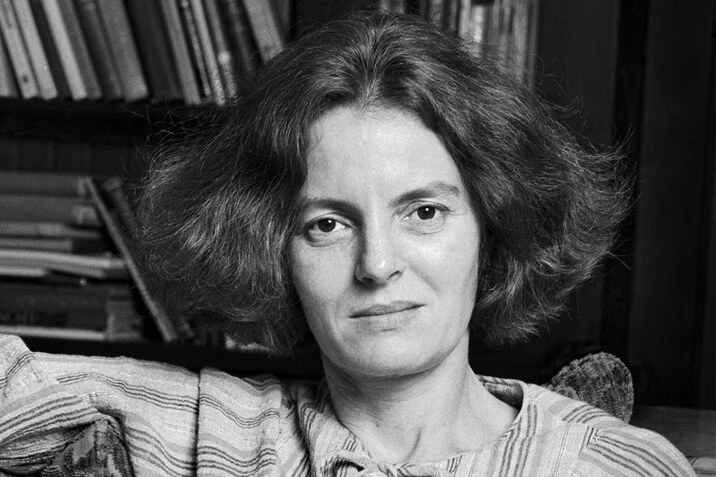Denise Scott Brown: The Visionary Architect Who Transformed Our Cities
The Overlooked Revolutionary of Postmodern Architecture
Did you know that one of the most influential architects of the 20th century was systematically erased from her legacy? While her husband and partner received architecture's highest honour, Denise Scott Brown was left in the shadows despite their work being truly collaborative. Her story reveals not just brilliant design innovation but also the painful reality of gender bias in architecture.
Who Is Denise Scott Brown?
Born in 1931 in what was then Northern Rhodesia (now Zambia), Denise Scott Brown forged her path in a field dominated by men.
She earned degrees from the University of Witwatersrand in South Africa, the Architectural Association in London, and the University of Pennsylvania, building an impressive educational foundation that blended architecture, urban planning, and social sciences.
Her intellectual curiosity wasn't confined to classrooms. She explored cities with a camera in hand, documenting urban landscapes others dismissed as ugly or ordinary. Years before it became fashionable, Scott Brown found beauty and meaning in Las Vegas's neon signs, suburban strip malls, and functional architecture—places the architectural elite preferred to ignore.
The Partnership That Changed Architecture
When Denise met Robert Venturi in 1960, it began one of architecture's most significant collaborative partnerships. Together, they challenged the cold, austere modernism that dominated mid-century design. Their revolutionary book, "Learning from Las Vegas" (1972), turned architectural thinking upside down by suggesting that everyday commercial architecture contained valuable lessons about how people live and communicate through built environments.
The firm they built together pioneered postmodern architecture, embracing historical references, playful ornament, and cultural context when others insisted on rigid modernist principles. Buildings like the Sainsbury Wing of London's National Gallery, Guild House in Philadelphia, and countless other projects showed that architecture could be both intellectually serious and joyfully accessible.
Erased From Her Own Legacy
Despite working as equal partners, when the Pritzker Prize, architecture's equivalent of the Nobel, was awarded to Robert Venturi in 1991, Denise was completely excluded. The committee honoured the work they had created together, but gave credit to only one creator.
This wasn't an isolated incident. Throughout her career, Denise watched as journalists, critics, and even colleagues attributed joint work solely to her husband. In lectures, she was introduced as "Robert Venturi's wife" rather than as the accomplished architect and theorist she was. Her contributions to their seminal writings were often minimised or forgotten entirely.
When asked about this erasure years later, she remarked with characteristic directness: "They owe me not a Pritzker Prize but a Pritzker inclusion ceremony. Let's salute the notion of joint creativity."
Beyond Buildings: A Social Vision
What makes Denise truly remarkable isn't just her buildings but her expansive vision of what architecture could be. While many architects focused solely on creating beautiful objects, she insisted that understanding social patterns, economic forces, and how people use spaces was essential to good design.
Her academic work at Yale, Penn, and other institutions helped transform architectural education. She pushed students to look beyond the drafting table and engage with communities, study sociological patterns, and consider the full context of their designs. Decades before terms like "inclusive design" became common, Denise was championing architecture that responded to diverse human needs.
Why She Deserves to Be Remembered
Without Denise Scott Brown, architecture might still be stuck in the elitist modernist paradigm that dominated mid-century design. Her intellectual courage in challenging architectural orthodoxy opened new possibilities for an entire field.
She wasn't just an architect—she was a writer, photographer, urban planner, teacher, and cultural critic whose influence stretched far beyond individual buildings. Most importantly, she was a woman who refused to be silenced in a profession that consistently tried to push her to the margins.
Let's Give Credit Where It's Due
Denise's story is a powerful reminder that innovation often comes from those willing to look where others won't—whether at gaudy Las Vegas signage or the overlooked contributions of women in male-dominated fields.
In 2018, when Denise was in her late 80s, a group of women in architecture launched a petition demanding that the Pritzker Prize committee retroactively recognise her contributions. While the committee refused to amend the 1991 prize, the campaign brought renewed attention to her work and sparked important conversations about collaboration and credit in creative fields.
Today, at over 90 years old, Denise remains a powerful voice for inclusivity and intellectual honesty in architecture. Her legacy isn't just in the buildings she designed but in how she transformed our understanding of what architecture can and should be.
What do you think? Have you heard of Denise Scott Brown before? Let's spread the word about her revolutionary contributions to how we design, understand, and inhabit our built environment!


